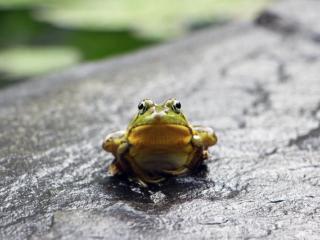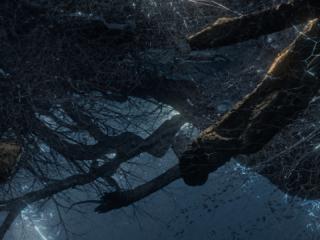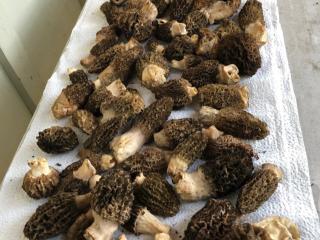One of the greatest walkers of our time, William Helmreich — known for exploring every street in New York City — was an early casualty of COVID-19. But composer David Rothenberg got to walk with him one last time, around wetlands in Queens.More
Science and Technology
Humans are not the only creatures who vocalize. Birds, whale and frogs have voices too—but are we listening? Bernie Krause has been recording environmental sounds all over the world since the 1970s. He says it's time for humans to shut up.More
Science writer Deborah Blum on the government scientists who made the case for food regulation by "eating dangerously."More
Suzanne O’Sullivan on what medical science is missing about mysterious illnesses. More
Skin color is loaded with assumptions about race and identity, but skin itself has its own fascinating history. Steve Paulson spoke with anthropologist Nina Jablonski to find out more.More
Science journalist Mark McClusky tells Anne that the secret to ever-increasing athletic performance is cutting-edge science and technology.More
New York Times Phys Ed columnist Gretchen Reynolds explains why movement is so important to our daily health, why running might be overrated, and how a little bit of pain can really maximize the benefit you see from your daily workout routine.More
Eye-to-eye epiphanies are experiences of kinship with the more-than-human world. Gavin Van Horn says kinship is also something to practice. He shares a few thoughts about how.More
After months of isolation, the COVID-19 lockdown is rewiring your brain. Neuroscientist David Eagleman says our brains are continually in flux, responding to the surrounding world. And the silver lining of coronavirus? It's probably boosting your creativity.More
In 1848 Phineas Gage suffered a gruesome accident. BIasting through rock to build a new railroad in Vermont, an explosion sent a 3-foot, 13-pound iron rod straight through his skull. Remarkably, Gage lived, but brain science changed forever.More
Philosopher Peter Godfrey-Smith says the octopus is "probably the closest we will come to meeting an intelligent alien.” It has no bones and most of its neurons are in its arms — not its brain. Can we ever fathom octopus consciousness?More
Helen Macdonald's book "H is for Hawk" turned her goshawk Mabel into one of the most memorable literary characters of recent years. Mabel is no longer with her, but Helen now has a new avian companion — an ornery and very smart parrot.More
Fungi contain vast, untapped potential, says Louie Schwartzberg — to remediate pollution, reverse climate change, even address chronic disease and mental disorder — something he argues in his film "Fantastic Fungi."More
Writer Eugenia Bone’s obsession with mushrooms began with her love of eating them. She shares notes from her hunts for morels as well as three recipes for how to best enjoy fungal delicacies. More
Mushrooms have inspired scientists, chefs and even musicians. Mycologist Lawrence Millman says they’ve also inspired a few composers, including Vaclav Halek and John Cage.More
Sara Wachter-Boettcher warns that failing to account for the unintended ways technology shapes our lives can cause us pain that might be avoided if we think about how we design digital platforms and apps differently.More
You know the Apple origin story with the two Steves in the garage. You know the Facebook origin story with Mark Zuckerberg in his dorm. But journalist Claire Evans argues, if you want to tell the internet origin story, you have to talk about women.More
Milwaukee historian John Gurda takes us on a boat ride down the Milwaukee River as we learn how the city nearly lost its river, and what Milwaukee is now doing to preserve it.More

















